




Thanh Toan old bridge built in 1776 for the connection between villages and a place to have some breeze during the summer day. The Bridge is one of the oldest bridge in Vietnam recognized by as country heritage in 1990
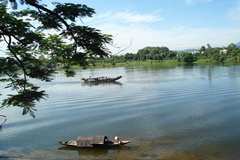
La rivière des Parfums (Sông Hương) tire son nom des nombreuses herbes médicinales qui poussaient sur ses rives. Nombreux villages de sampans avec leurs petits autels et les offrandes sur le toit, à l’intention des génies de l’eau. La...
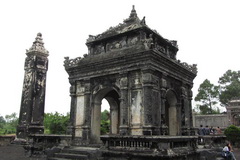
Dong Khanh's Tomb construction lasted through the lives of four Emperors Nguyen (1888-1923). That's why it bears the stamp of two architectural inclinations of two different historical periods. After being crowned, Dong Khanh had a temple built beside his father's tomb named Truy Tu...
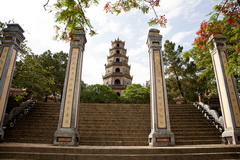
La pagode de la Dame céleste (en vietnamien: Chùa Thiên Mụ) est la pagode la plus haute du Viêt Nam avec les six étages supérieurs de sa tour, dénommée « Source de félicité ». Elle se trouve à Hué sur...
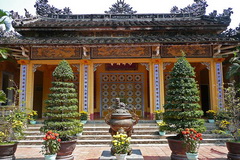
The pagoda includes a main sanctuary with two statues of the Deity Eight Vajra.Dieu De Pagoda was built by King Thieu Tri in 1844 on the platform of 5,000m² in his old residence, where he was born in 1807. It was constructed on a large scale, but was badly damaged during the successive wars....
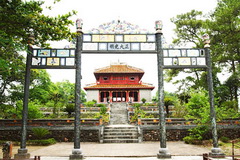
After being on the throne for seven years, Emperor Thieu Tri was sick and died on 4 November 1847 at the age of 41. In his lifetime, the Emperor neither thought of his death nor wanted the people and soldiers to waste so much labour and property for him, so he did not have his tomb built.As soon...

The national park, extended in 2008, lies on a high mountain ridge that runs west-east from the Laotian border to the East Sea at the Hai Van pass. This ridge interrupts the coastal plain of Vietnam, and, therefore, forms a biogeographical boundary between the faunas and floras of northern and...

Elle sert d’entrée principale et de façade de la Cité Impériale. Construite en 1833 sous le règne de Minh Mang au moment du ré-aménagement de la Cité. La Porte du Midi constitue un ensemble d’architectures diversifié, elle...

Le temple de la Littérature est un temple confucéen du Viêt Nam, situé sur la rive gauche de la rivière des Parfums à un kilomètre de la pagode de la Dame céleste à l'ouest de la ville de Hué.Sous le règne des...

De tous les tombeaux impériaux qui jalonnent la rivière des Parfums, le mausolée de l’empereur Khai Dinh, l’avant-dernier souverain de la dynastie des Nguyên (1802-1945), est le plus étonnant, son architecture étant totalement différente...

Soyez le premier à connaître nos offres de voyage exclusives et les nouveaux circuits !.